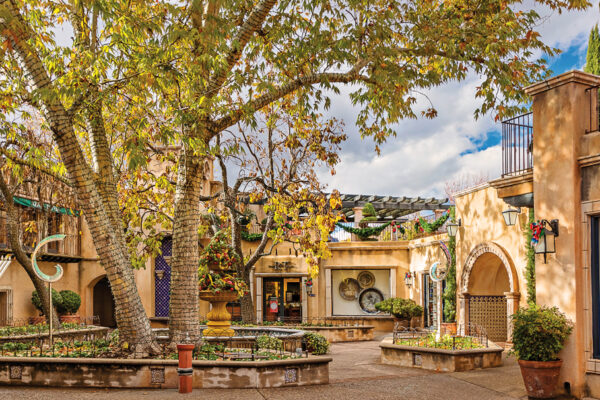Sedona
Learn more about two historical spaces in Sedona that are still in use today, the Hart Store/Hummingbird house and the Sedona Heritage Museum.
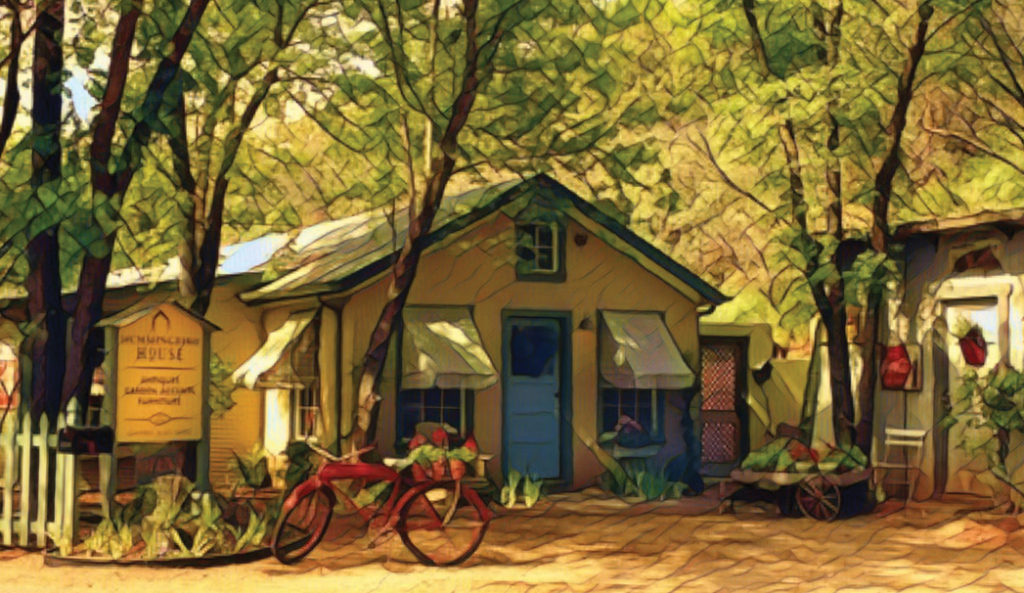
The Hart Store/Hummingbird House
The Hart Store/Hummingbird House
Named after L.E. “Dad” Hart, a rancher in the Verde Valley, the Hart Store was Sedona’s first general store. He constructed the building in 1926. At one time, the Hart Store had a gas station and was also home to the first private telephone in Sedona. “He and his wife, they were considered very generous, and they always made sure all the local kids at Christmas got oranges and hard candy in their stockings. During the Depression, when people were troubled, they extended credit to their neighbors,” says Janeen Trevillyan, the historian of the Sedona Heritage Museum, of the rancher Hart. Janeen also has resided in Sedona for over 22 years.
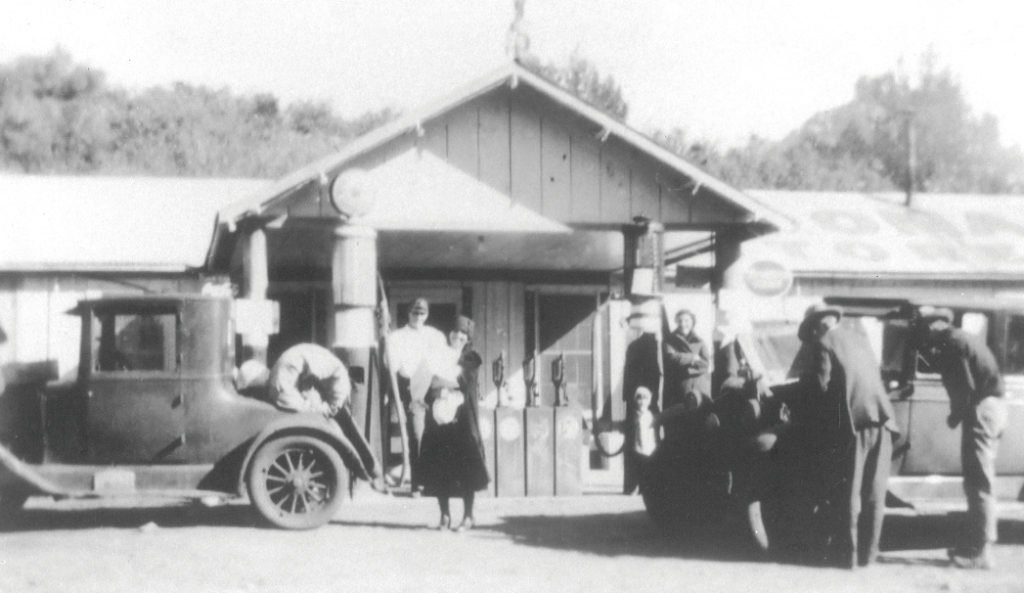
The Hart Store/Hummingbird House
Brewer Road, at one time, was located in Sedona’s original commercial district that was home to a school and a ranger station. But in the late 1930s, the highway department built what is now AZ-179 and rerouted traffic – leaving the old downtown behind. The building was converted into a home and then a duplex and then was empty for many years until becoming The Hummingbird House. The original water wheel is still on property. The building was added to the National Register of Historic Places in 2006. Today, the Hummingbird House sells antiques, garden accents and furniture. It’s also one of our personal favorite places to shop. We can always find treasures inside of this charming boutique. Although this historic place is currently for sale, the Hummingbird House will be open through December for one last holiday shopping season. Stop in while you still can.
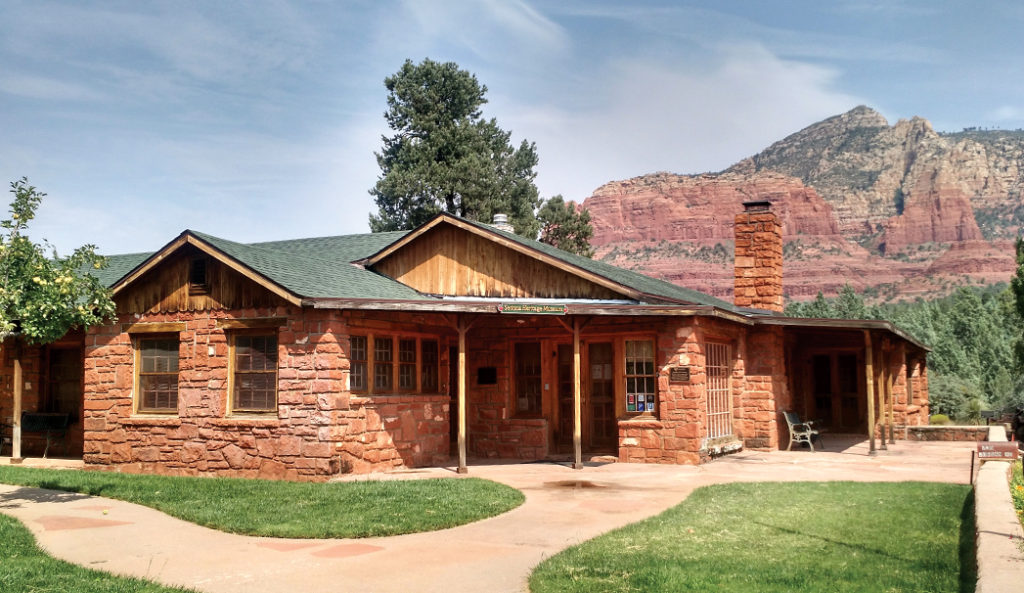
Sedona Heritage Museum
Sedona Heritage Museum
It’s fitting that Sedona’s museum dedicated to preserving the city’s history is also a historical place. The museum sits on the former Jordan family homestead, one of the city’s original homesteading families. The red rock views from here are also fantastic. According to Janeen, here’s how the story goes: The Jordans were prominent farmers in Clarkdale. The Clarkdale smelter put out so much pollution that it ruined the Jordans’ crops. Will and Ruth Jordan successfully sued the smelter, and Will bought farms in Sedona – one where the museum stands and the other where the Sedona Arts Center is currently located. Father Jordan’s son Walter Jordan built a one-room cabin in 1931, which is the center of the museum. In 1937, his wife Ruth’s mother came to live with them and added two bedrooms and indoor bathroom. In 1947, a full-sized kitchen, garage, heating system and attached garage – bringing the total square footage of the home to 3,000 feet. Specific historical items you might see are Good Housekeeping and House Beautiful magazines from the 1930s and 1940s. The home had multiple Dutch doors for airflow and even a boiler/radiator system that is still used today to heat the home. The home’s exterior is outfitted with red rocks that came from a local quarry. If you visit the home, you can see the history of the home reflected in the building materials.
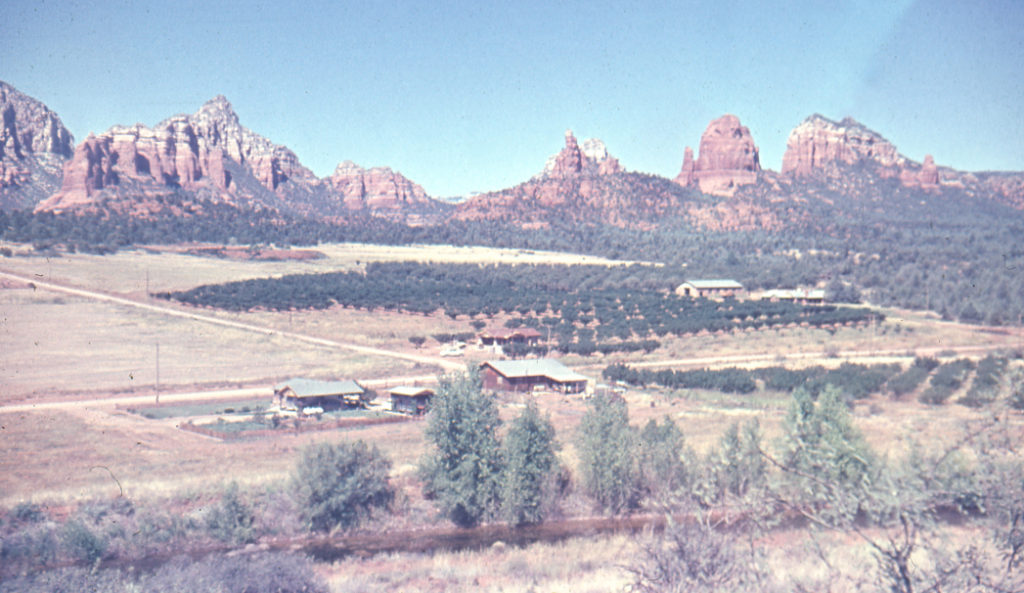
Sedona Heritage Museum
“When you tour the house, and you’re in the 1931 cabin, then you go to the 1937 cabin, you can see the change in materials and construction and width support, things like that. Then you move from ‘37 into the ‘47 part and again, now they bought oak floors that were shipped in instead of just buying pine from Flagstaff. The pine is finished. The pine walls, pine ceilings are a urethane in the ‘47 section. Whereas the earlier sections of the house are just natural raw wood,” says Janeen.

Sedona Heritage Museum
Today, the Sedona Heritage Museum serves as a place where visitors can learn more about the town’s history and its founders. Aside from the main home, additional things to look out for include a fruit packing shed, an apple grading machine that’s on display and allowed the Jordans to deliver four to seven tons of fruit to Phoenix several times per week and a tent house or replica of an early pioneer housing that could be easily moved – that was added as a museum exhibit in 2007.
Jerome
A 40-minute drive from Sedona, Jerome is known for being one of the most spirited cities in the entire Verde Valley, if not all of the United States. During its heyday, Jerome was the fourth largest city in the entire state in 1899. At one time, Jerome was home to the world’s most productive copper mine. Jerome takes its name from United Verde Copper Company investor Eugene Jerome, who never actually visited the town. After the mines closed in the early ‘50s, the population dwindled to less than 50 people in 1955. In 1966, the Chamber of Commerce home tour and historic building tour started. During that same year, the entire town of Jerome became a national historic landmark and district. In the late ‘60s, ‘70s artists came to town and helped revitalize the town. One way to soak up the history is by looking for the placards on each of the buildings. They tell a story. “The cool thing about the historic placards is everything is true. As far as the history goes, we haven’t embellished anything. A majority of them have photographs of what the building used to look like back at the turn of the century, and that’s something that as you’re popping your head in the shops, that’s something to take notice of,” says Jay Kinsella, general manager of the Jerome Historical Society. He’s resided in Jerome since 1979. “We’ve transitioned from a billion dollar industry of copper to less than 50 people to a town to visit.” History is the backbone of Jerome. “Without the history in Jerome, Jerome probably wouldn’t exist,” says Jay. Here are a few spots around town that we’ve chosen to highlight.

Jerome Grand Hotel photo by Deb Weinkauff
Jerome Grand Hotel
Sitting high on Hill Street overlooking all of Jerome, the Jerome Grand Hotel has a fascinating history. According to the hotel’s official website, the building was constructed in 1926 as the United Verde Hospital to replace another hospital that was damaged due to blasting. The hospital opened in January of 1927 and featured surgical facilities, X-ray, laboratories, balconies and sun porches. In 1930, it was considered to be the most modern hospital in Arizona. The hospital closed in 1950. Most of the furniture was removed in the 1970s and 1980s. In 1994, owner Larry Altherr purchased the property and still owns it today. He set out to transform the space into a place reminiscent of its glory days in the 1930s. The hotel opened in July of 1996. If you’ve never been, the views from the hotel are magnificent and make the drive up to the top of the hill worth it. The on-property restaurant The Asylum is a fine dining restaurant that serves outstanding food. We’ve been in the lobby and heard a visitor say that she was born in the former hospital. It’s safe to say there probably isn’t any place in the world that’s like this hotel – not with the same history and those aforementioned stunning vistas, at least. “The building continues with renovation to bring back that richness of the 1930s, with antiques lining the halls, beautiful paintings and furnishings depicting the bygone days. The structure remains physically the same as when it was the hospital as it’s a historic building that we want to keep intact, but with upgraded comforts. We still know the spirits are around, and we remain respectful of their presence,” says Sarah Moser, the hotel’s general manager.
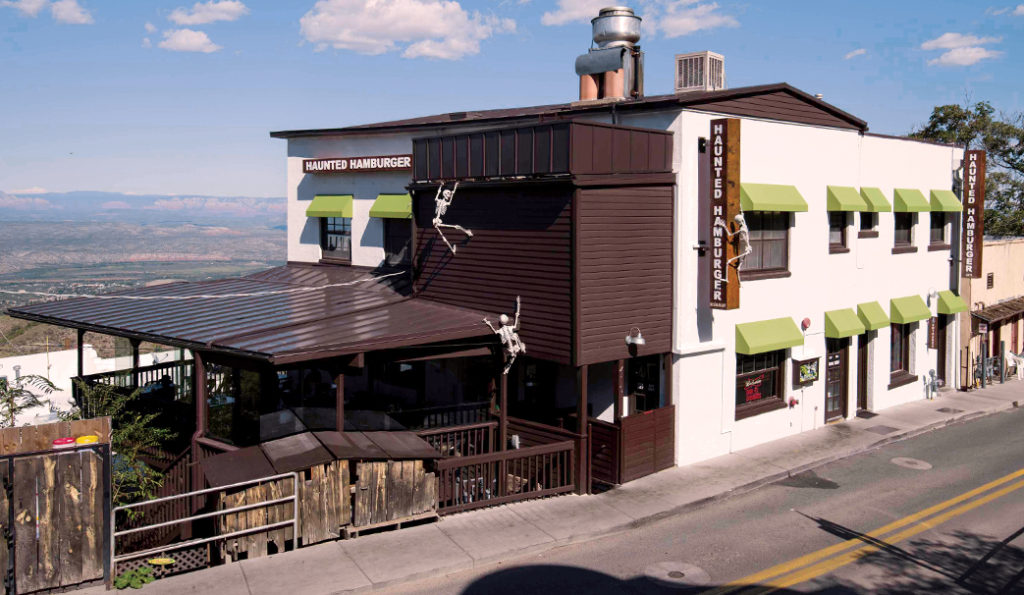
The Haunted Hamburger photo by The Haunted Group.
The Haunted Hamburger
The Haunted Hamburger was built in 1910 as a boarding house for local copper miners. The miners would take shifts based on their work schedules. After the first mine closed during the Great Depression, a local family purchased the building and turned it into their private residence. Each of the four floors housed a single generation. After the older generations passed away, the remaining relatives moved away and sold the place. The new owners opened the first restaurant and bar in the building that was called Herges Ridge. The building changed ownership many times and was eventually called the Jerome Palace – a name still used today. More than 20 years ago, owners Eric and Michelle Jurisin drove up from Phoenix and saw the boarded-up building for sale and realized its potential. Two decades later, the restaurant is still thriving.

The Haunted Hamburger photo by The Haunted Group.
The restaurant’s name says it all: burgers are the stars of this menu. Dig into options like the Bacon Cheese Burger, Chili Cheese Burger and the Haunted Burger made with bacon, cheddar, Swiss, mushrooms, green chilies, grilled onions and guacamole.
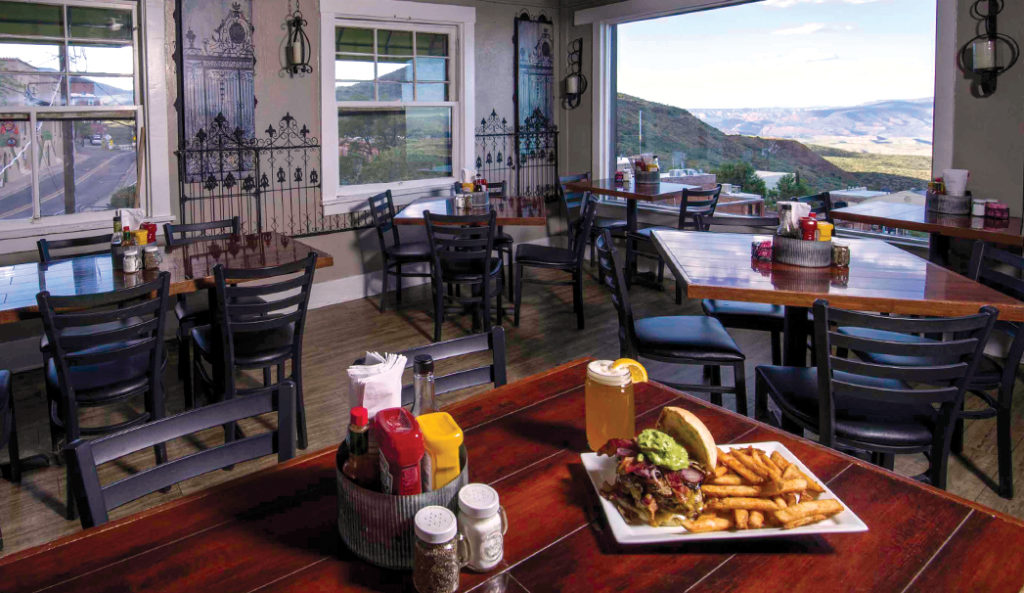
The Haunted Hamburger photo by The Haunted Group.
The menu is rounded out by hot dogs, chicken and cheesesteaks. Don’t miss the milkshakes. No matter what you order, enjoy the views. The patio offers sweeping views of all of Jerome.

The Clinkscale Hotel, Bar + Grill photo by The Haunted Group
The Clinkscale Hotel, Bar + Grill
After being destroyed in a fire that devastated Jerome in the 1898, The Clinkscale was rebuilt in 1899 and is even on the National Register of Historic Places. The building was owned by the Clinkscale family and was a mercantile store. One noteworthy fact: This was the first location in the West that sold Levi Strauss denim. At one time, the building housed a T.F. Miller Hardware store. Following that, numerous restaurants called this space home including Candy Kitchen Restaurant & Candy Store, Betty’s Ore House and then the Mile High Inn & Grill.
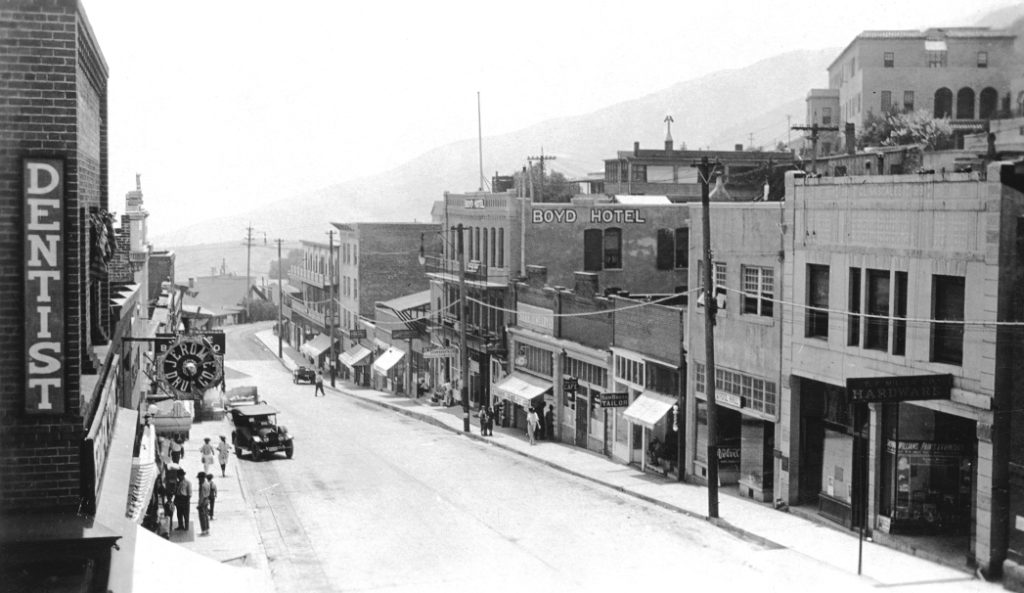
Clinkscale Historical Photo courtesy of the Jerome Historical Society
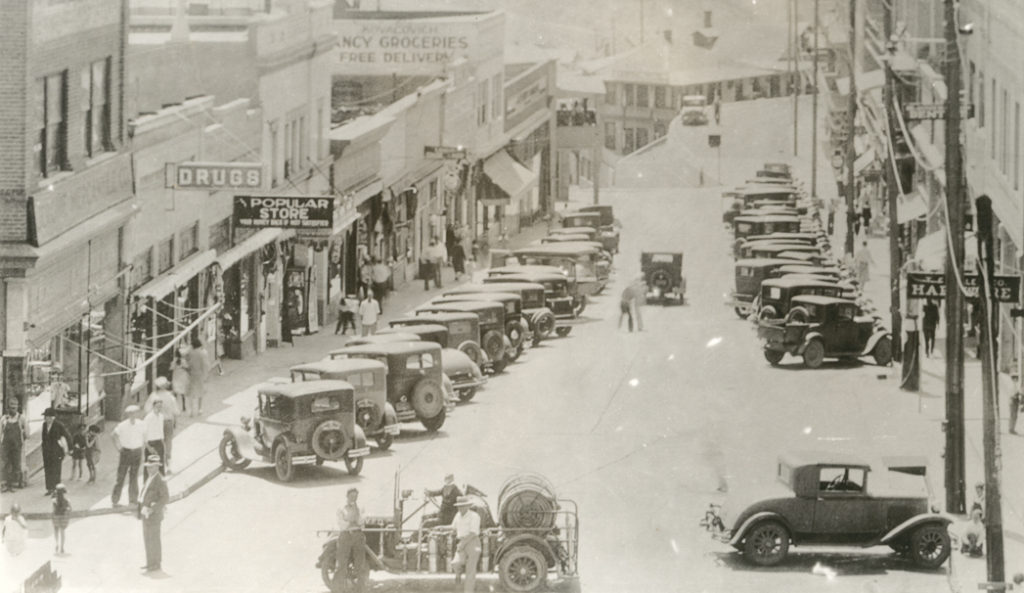
Clinkscale Historical Photo courtesy of the Jerome Historical Society
The Jurisins purchased the building in early 2020 and reopened the building as The Clinkscale Hotel, Bar + Grill. The lower level is home to the Lobby Bar and Restaurant where diners can enjoy craft cocktails and modern American cuisine. Restaurant décor includes exposed brick, hardwood floors, brown leather and steel accents. Guests can look forward to plates like Fish Tacos, the Double Stack Flat Top Seared Bacon Cheeseburger and Chicken Milanese.
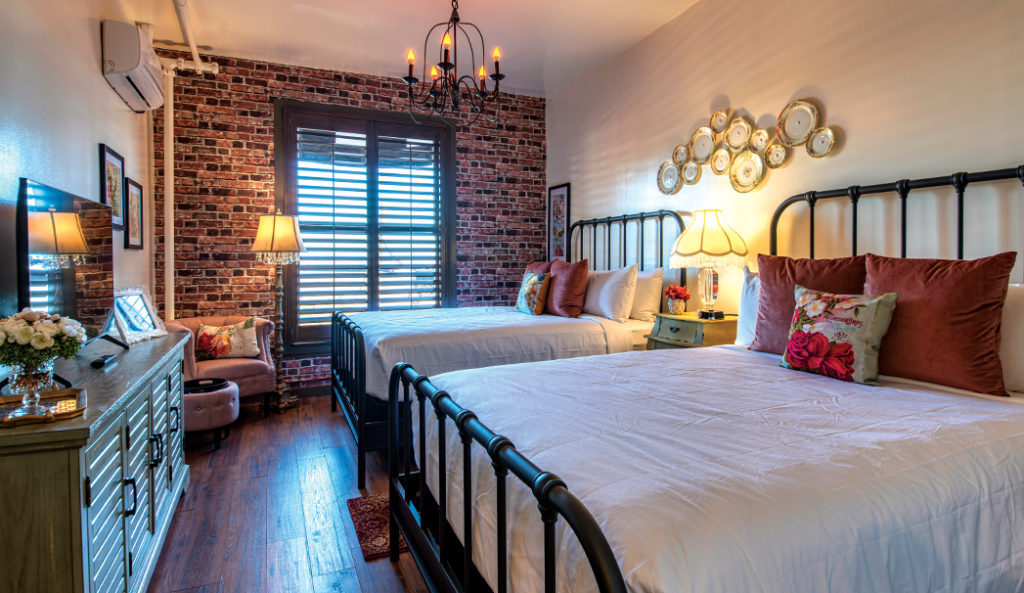
The Clinkscale Hotel, Bar + Grill photo by The Haunted Group.
Upstairs is a sixroom boutique hotel. Legend has it that Sipps, the Clinkscale’s cat, still may roam the halls here. New this year, the Jurisins are working on constructing a penthouse that connects The Clinkscale to The Haunted Hamburger.

Mining Machinery photo by Donna Chesler
Jerome State Historic Park
Housed in the Douglas Mansion that was built in 1916 and the home of Little Daisy Mine owner James “Rawhide” S. Douglas, Jerome State Historic Park visitors can learn all about the history of Jerome as a thriving mining town. Check out photographs, artifacts, minerals like huge pieces of native copper and malachite, a video presentation about the town and a 3D model of the city featuring its underground mines. Don’t miss the display of minerals that appear to “glow” in the darkness. The outdoor picnic area features stunning vistas of Jerome and the surrounding area. The Douglas library and upstairs bathroom contain period-appropriate furniture. Another highlight is the Audrey Shaft Headframe Park, which is right next to Jerome State Historic Park. Assuming you don’t have a fear of heights, you can stand on glass and peer down a 1,900-foot shaft. In case you’re not familiar, a headframe is a frame that’s above the entrance to an underground mine shaft. This particular headframe was finished in 1918 and is the largest wooden headframe in Arizona. Additional mining equipment is on display. The equipment has placards explaining what the equipment is and does.
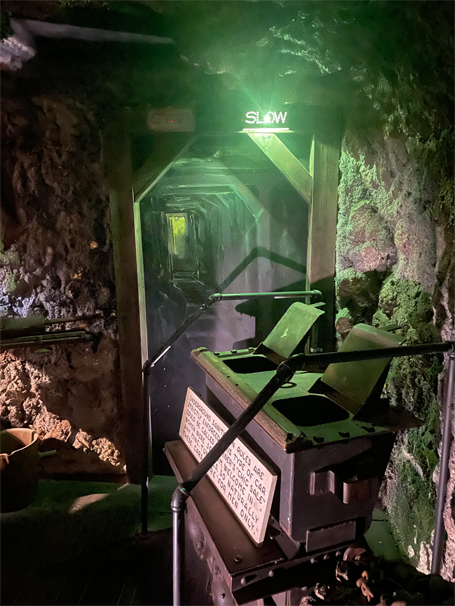
Mine Museum and Gift Shop
Mine Museum and Gift Shop
Located on 200 Main Street, the Mine Museum and Gift Shop has been home to the Jerome Historical Society since 1953. Inside the retail shop, Jay tells us you can expect to find a lot of copper jewelry – a nod to Jerome’s days as a copper mining town. Inside the museum, you can learn more about the multicultural melting pot Jerome once was. Find a plethora of historical relics including hand-forged candlesticks, mining equipment and household goods from the era including newspapers, club memberships and medallions.



